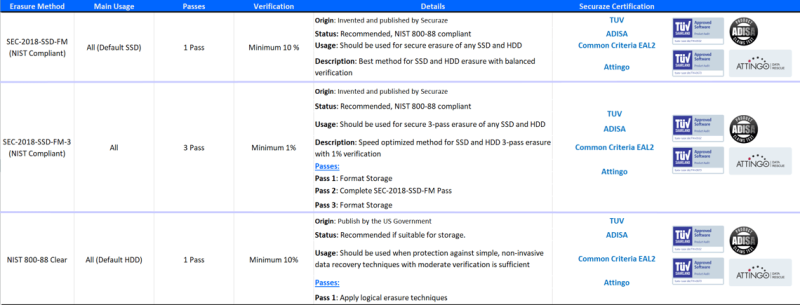
In the digital age, concerns about data management and privacy are ever-increasing as the volume of data is increasing exponentially. As regulatory compliance and concerns about data privacy grow, it is the job of the IT industry to ensure data security, preventing leakage, through proper implementation of data sanitization procedures and tools.
Data sanitization is the necessary process of deliberately, permanently, and irreversibly removing or destroying the data stored on a memory device to make it unrecoverable. A device that has been properly and thoroughly sanitized has no usable residual data. In this article, we will discuss and review some proper and improper methods for sanitizing data.
Proper Data Sanitization
It is vital to sanitize data correctly to avoid improper usage of your organization’s data. Below are some proper ways to sanitize your data:
- Physical Destruction – The process of physically shredding items like hard drives, smartphones, printers, laptops, and other storage devices. Large mechanical shredding machines handle this process.
- Cryptographic Erasure – The process, also known as Crypto Erase, involves using encryption software (either built-in or deployed) on the entire storage drive and then erasing the key used to decrypt the data. This encryption uses a minimum 128 bits algorithm.
- Data Erasure – A software-based method of securely overwriting the data from the storage device using zeros and ones onto all sectors of the device.
Improper Methods
While we will not go over this extensively, here are a few of the top methods that are not considered proper data sanitization. This puts your data at risk and should be addressed immediately if your organization participates in these practices.
- Data Wiping – Often confused with data erasure, this process misses a fundamental step compared to data erasure. Data wiping does not verify the space is appropriately overwritten to ensure the data is fully sanitized.
- Data Clearing – This process is good at protecting data from keyboard attacks. Data clearing provides many options, including returning the device to a factory state where previous file points are deleted. While effective, this is not proper data sanitization and does not meet the requirements outlined in the definition.
- Data Deletion – Simply deleting the data is not enough to protect as your data is not truly sanitized until it has been overwritten.
- File Shredding – Also commonly confused with data erasure, this process involves destroying files and folders by overwriting the space with random ones and zeros. It does not verify the overwritten data has been sanitized.
- Factory Reset – Common on mobile devices, it is not an effective method to completely sanitize your data.
- Reformatting – The same as data deletion, the process is not enough to properly sanitize your data.
So What Should You Do?
Data sanitization is a vital process for repurposing assets or recycling e-waste. There are proper methods to data sanitization that you should follow; failure to do so can compromise the privacy and security of devices.
If you are uncertain about the process or exposure within your organization, we are here to assist. Our team has extensive experience in data sanitation methods and will ensure your organization is protected from data leakage.
Securaze: Innovation. Integrity. Transparency.

Source: https://blog.securaze.com/lets-discuss-data-sanitization-misconceptions-misinformation-reality
About DT Asia
DT Asia began in 2007 with a clear mission to build the market entry for various pioneering IT security solutions from the US, Europe and Israel.
Today, DT Asia is a regional, value-added distributor of cybersecurity solutions providing cutting-edge technologies to key government organisations and top private sector clients including global banks and Fortune 500 companies. We have offices and partners around the Asia Pacific to better understand the markets and deliver localised solutions.










